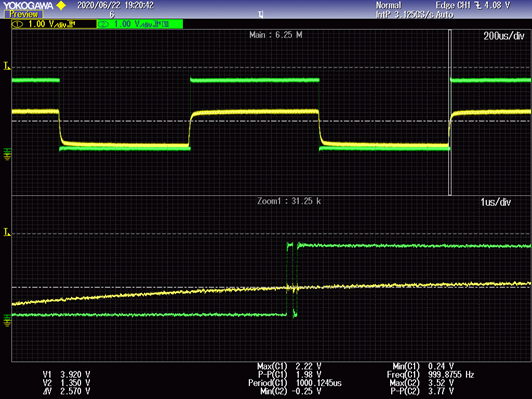Hi expert,
My customer meet a case where ECAP being influenced by external noise and get wrong capture result. They would like to solve this issue with GPIO qualification and change paramters in external circuit.
In idea situation, CH1 is external input signal, they detect this signal and output it to GPIO28 (CH2) to know the "input signal state".
In real situation, glitches can be seen in the capture result, and the influence of glitch is also indicated with GPIO toggling.
They solved this with GPIO input qualification. Configuration shown below:
Based on this, we'd like to confirm below questions:
1. Does ECAP comply to below electrical characteristics? How does it detect external voltage? (like with a majority vote or directly trigger with voltage level?)
2. What will input state be judged when voltage is between 0.8V to 2V? How will hysteresis influcence here?
Thanks
Sheldon





